

Kaleburnu – a tiny hillside village on the Karpaz Peninsula. But hidden in the beautiful countryside around it are some fascinating traces of the past. We just had to find them.
Last month we went to the Karpaz Peninsula for a short holiday. We stayed in Dipkarpaz which was a great base to explore the tip of the peninsula from. But we also explored in the opposite direction, taking the coastal road south-west of Dipkarpaz. As soon as we were out of the village, the road dropped down off the hill into a long open valley, carpeted with green crops that stretched into the distance. Spring was the right time to visit the peninsula. The wide blue sky, the sunlight and miles of open space were so energising that we had to stop the car and get out.
In the distance I spotted two dark mouths gaping out of a green mound. I was certain they were cave or tomb entrances, so we ran off to explore them.
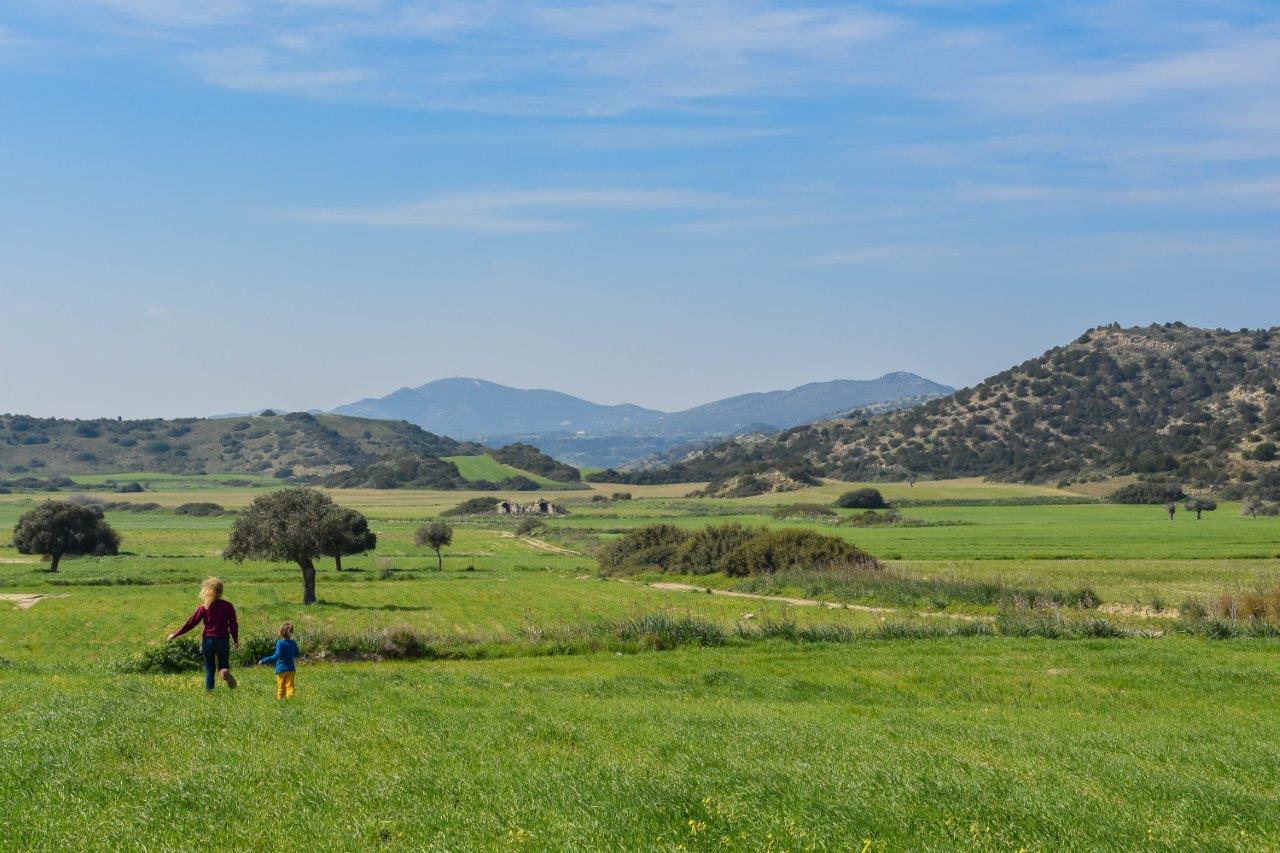
They weren’t the entrances to a cave or a tomb. They were the tops of two arched ceilings. In the middle of a farmer’s field, we had found a sunken church. It was covered with foliage and half hidden by bushes.
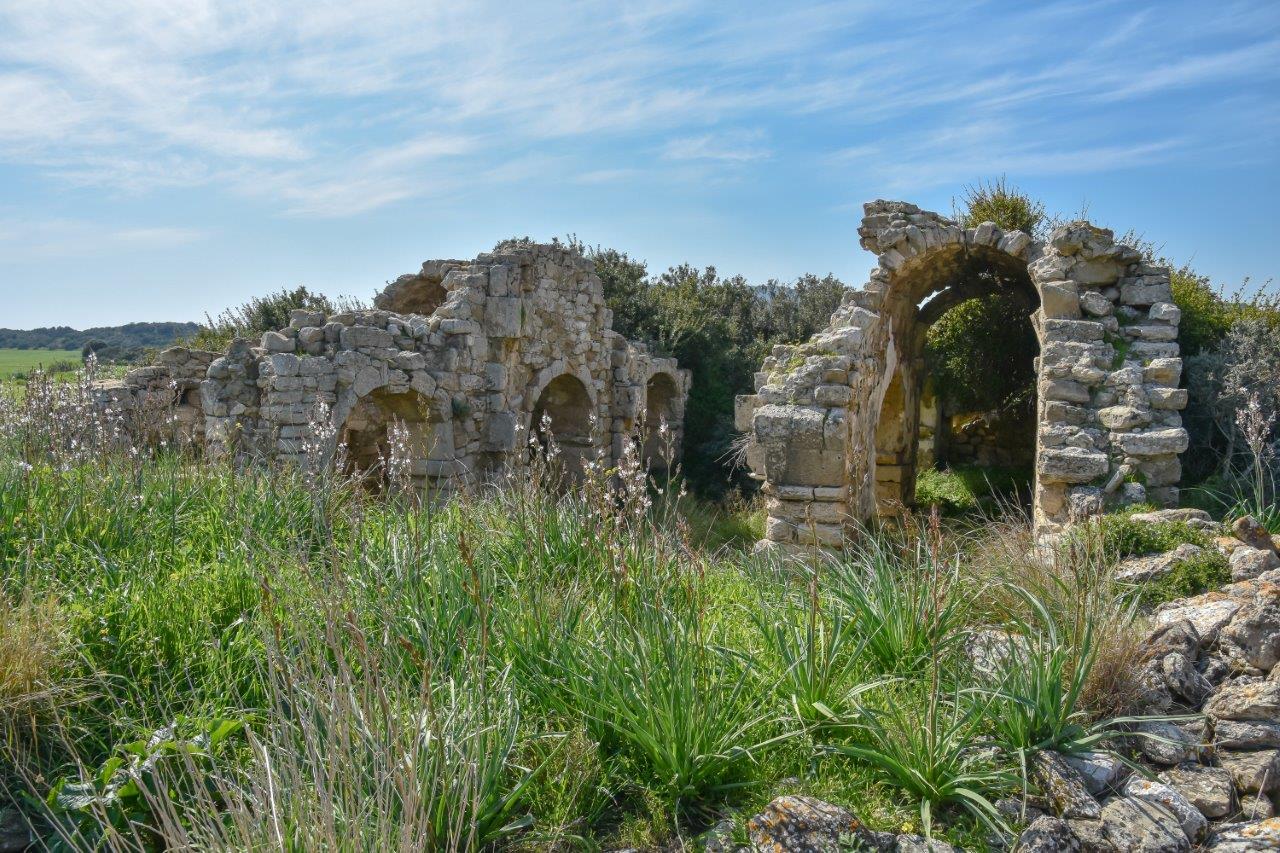
We found our way through the foliage, over fallen stones and carefully climbed down into the church. Thank goodness it was February. A few months later and there may have been snakes.
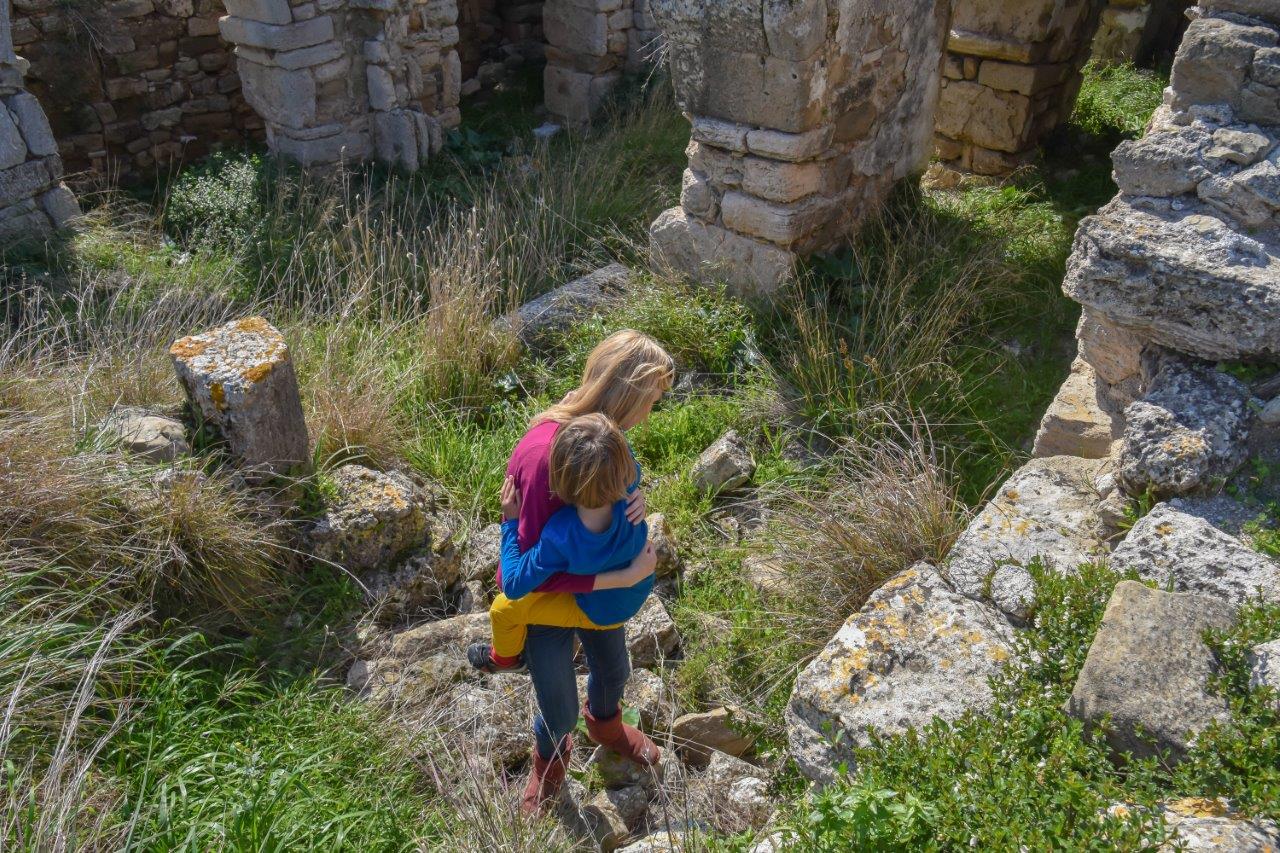
As we walked through the ruins, it was obvious that this church was ancient. The stone-work, particularly in the ceilings, just oozed age. I’m no archaeologist, but it looked as old as the 1000-year-old churches we’d seen in Aphrendrika the day before.
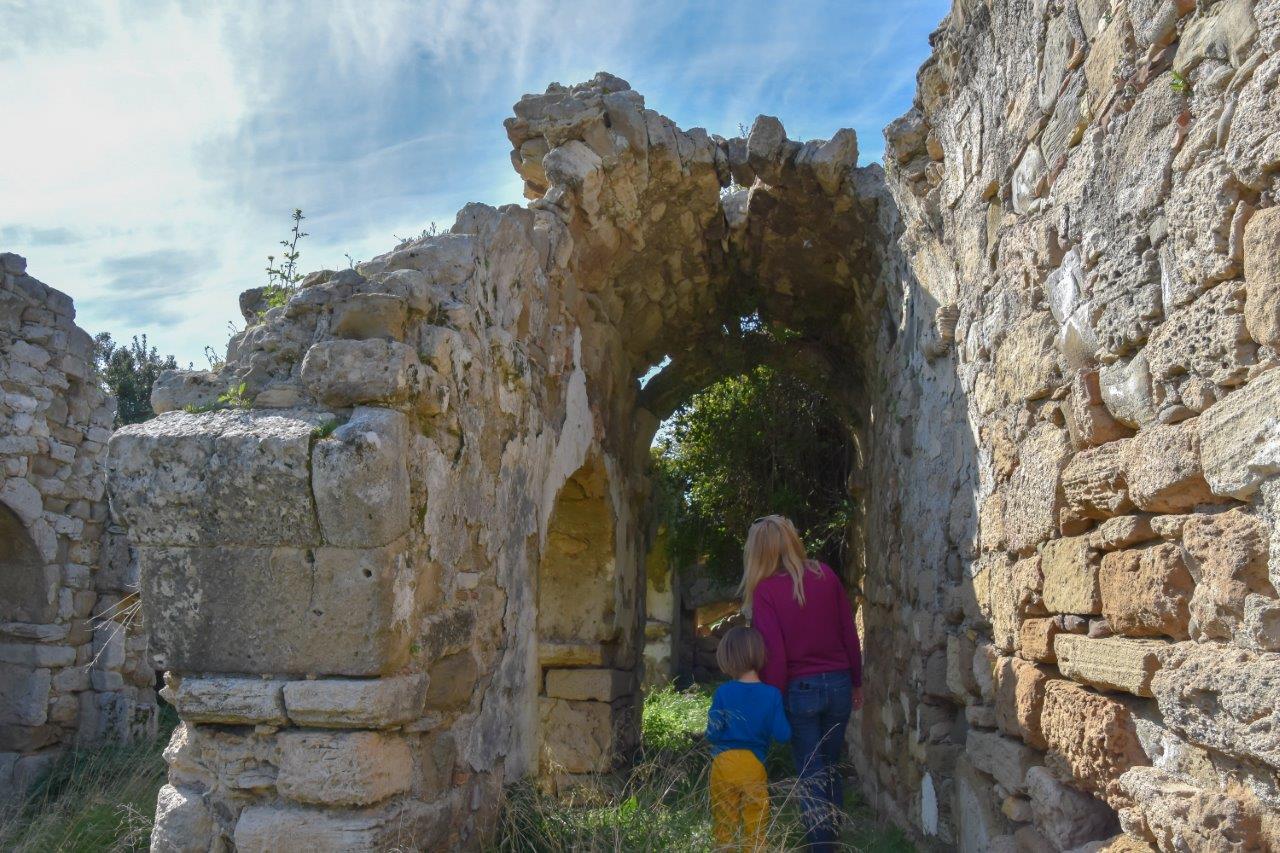
Scattered across the floor were fallen pillars and a block of marble. There was the odd remnant of marble still attached to the walls – perhaps part of a step. On the far wall above my head were very faint traces of a fresco, almost impossible to see in the photos. Patches of blue and red. I bet this place looked magnificent in its day.
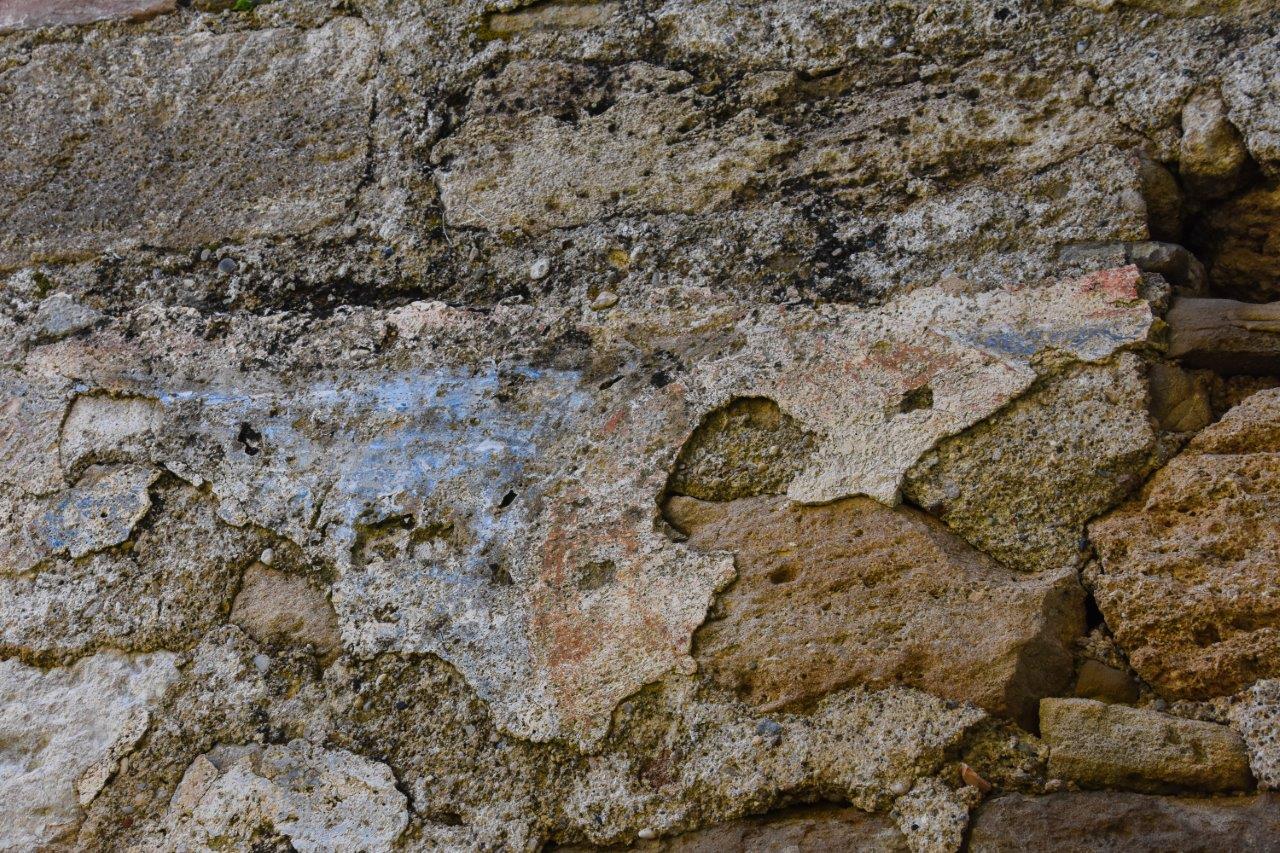
Later, I tried to find out more about this place but there was nothing in the guide books or online sites. However, I looked up Kitchener’s Survey of Cyprus 1882. If you are interested in ancient sites, Kitchener’s maps from 1882 are really interesting because all of the sites have been plotted on them. On the spot near where we were is marked ‘Ayios Yeorgios (ruins).’ Could this be the same church?
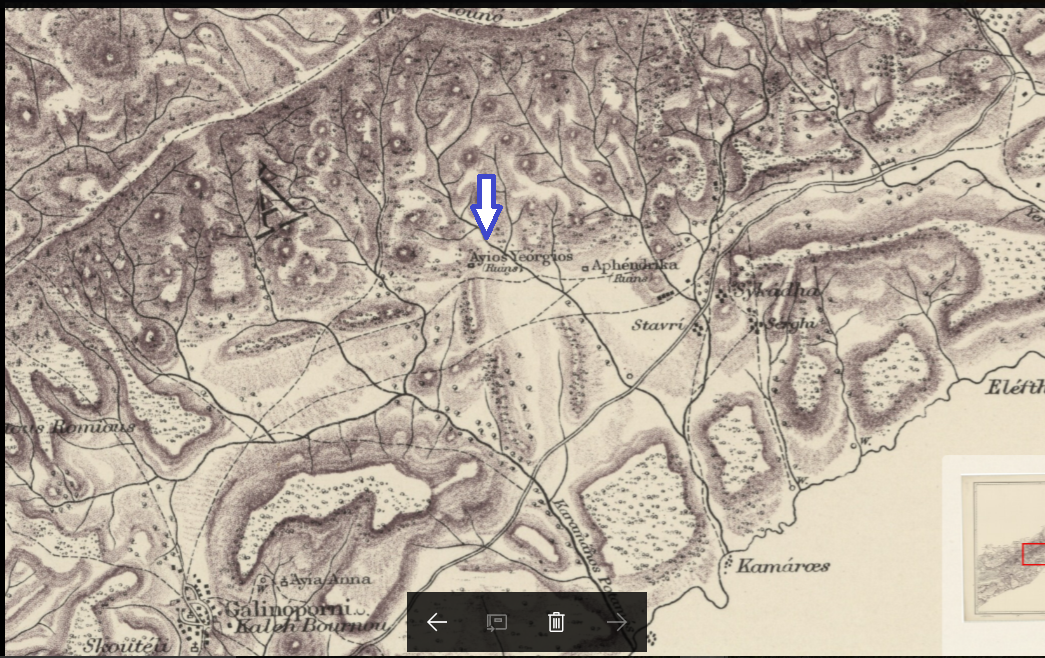
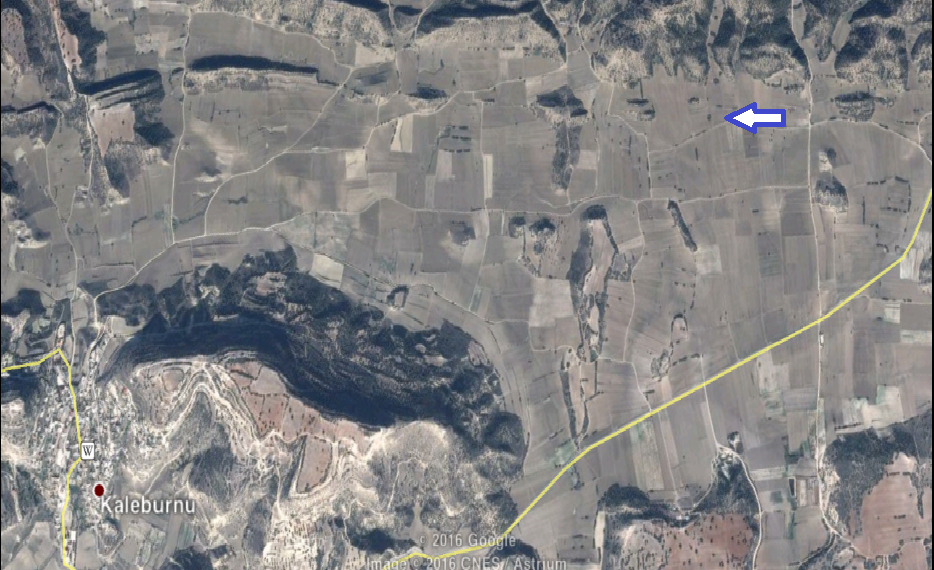
Invigorated by our find, we got in the car and set off for Kaleburnu, where I’d heard there was an impressive tomb called the Kastros Hill Ancient Cave Tomb. But we couldn’t even find a sign for the tomb – not until we’d driven past the village, turned round and approached the village from the opposite direction. There at the entrance to the village was a sign directing us to the tomb. Signs facing the opposite direction to where we were going became a bit of a theme on our holiday.
We drove into the village, up the hill, following the signs. It was well-signposted . . . until the signs stopped. So we just drove round and round the labyrinthine village roads and eventually saw a sign again. The tomb was halfway up the hill on the east side of the village.
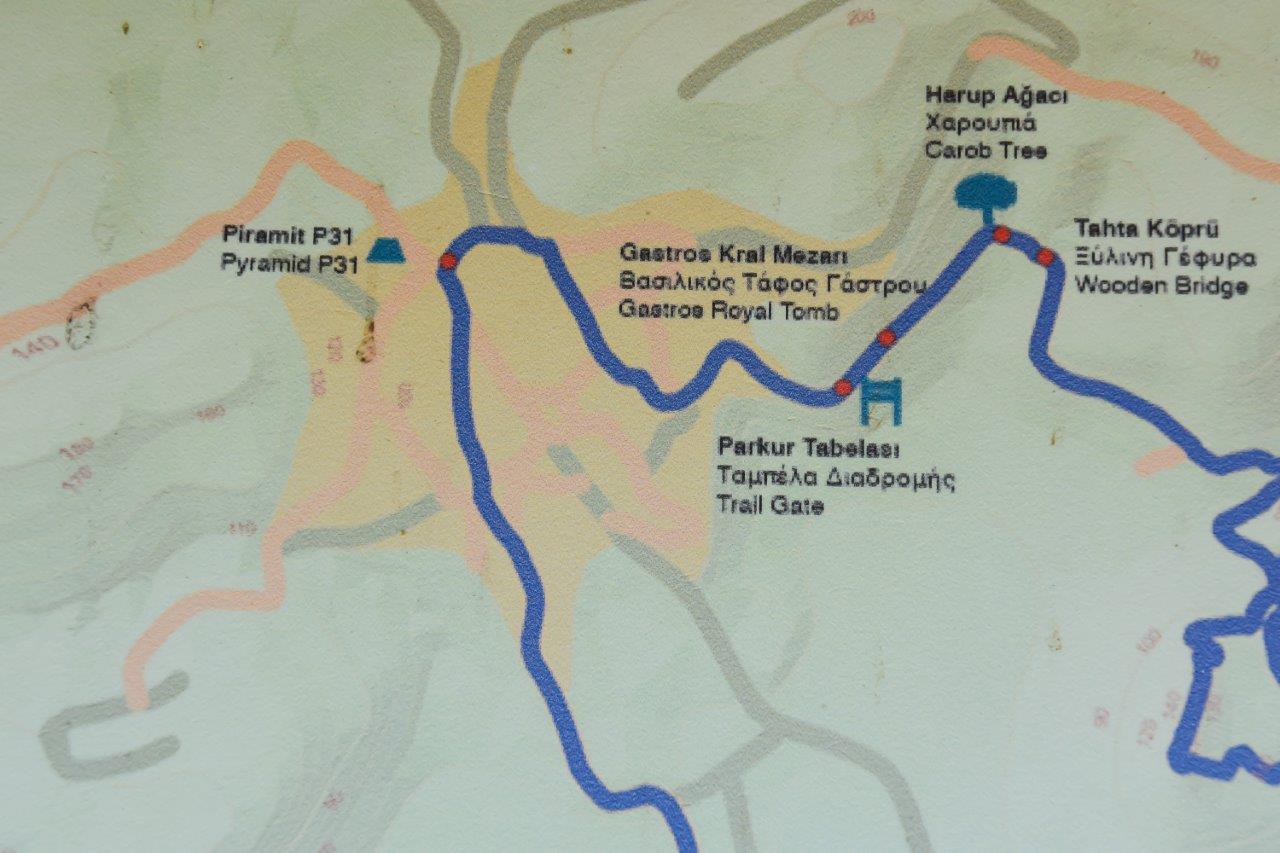
We parked the car and followed the footpath along the edge of the hill towards the tomb. If you hate heights you might not enjoy this bit because the path is very narrow and there is a steep drop on the other side. Matt had to go ahead with Goobie to avoid me getting the Mummy-Wobbles (a fear of Goobie falling).
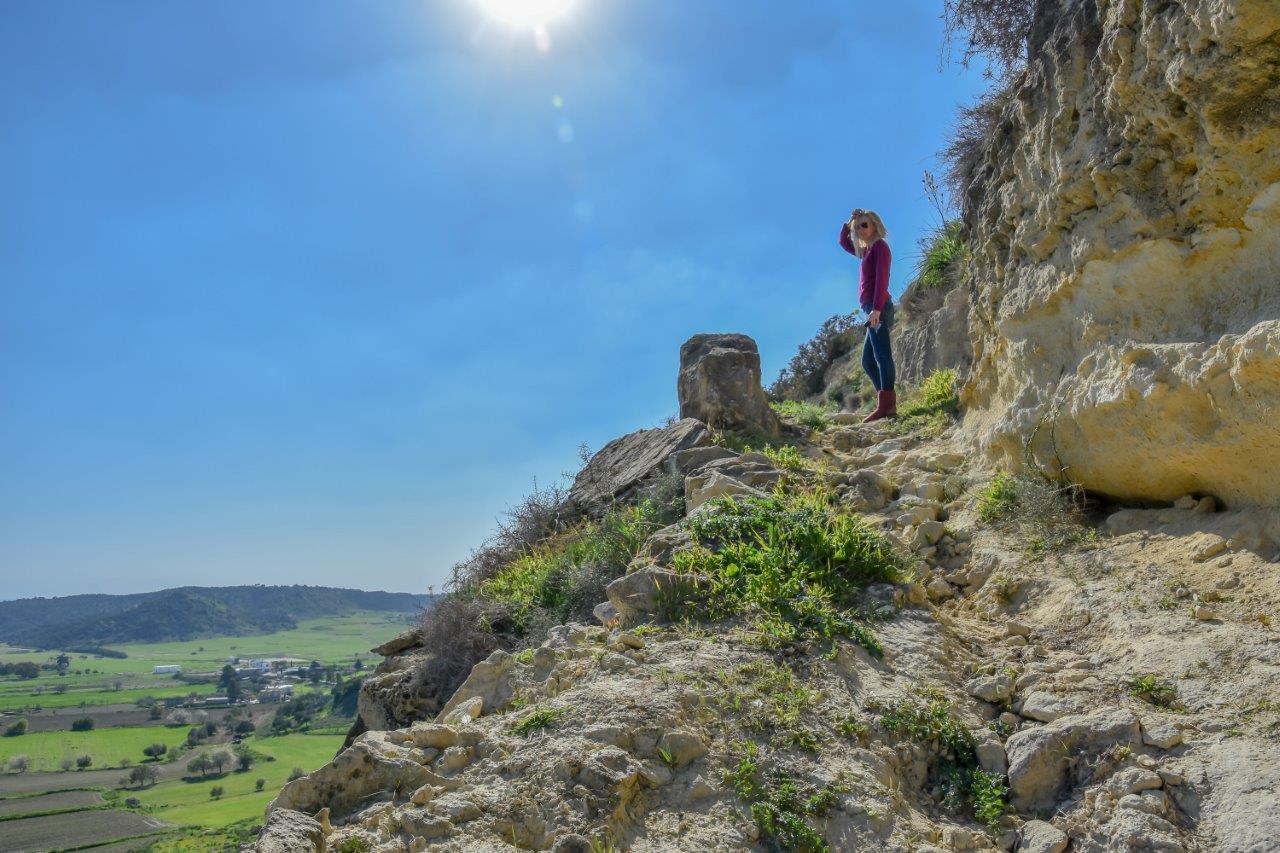
The footpath ended at what looked like a hole in the ground, but was actually makeshift steps to the tomb’s entrance.
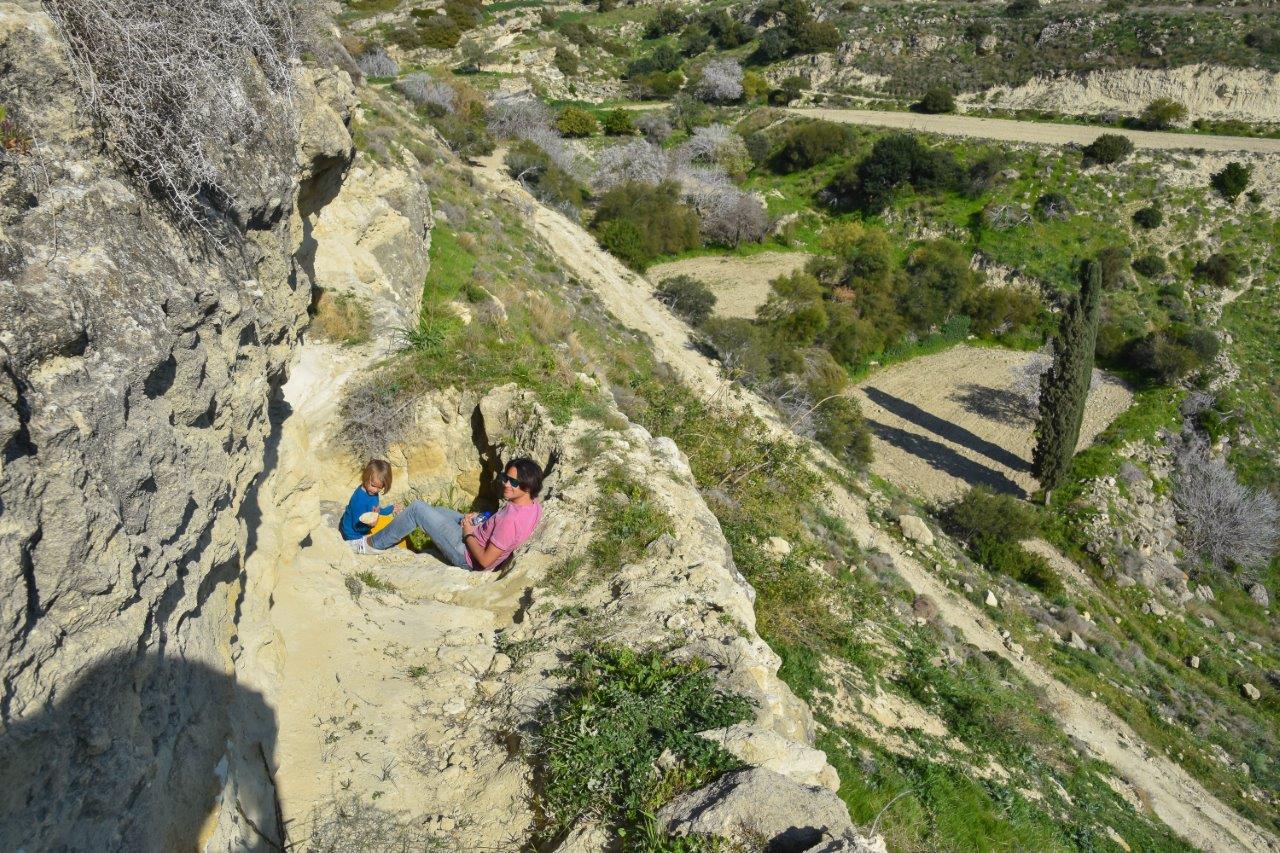
We had to duck down to go through the entrance but, once inside, it opened out into a massive chamber. The chamber followed the edge of the hillside for some way, other entrances filling it with light.
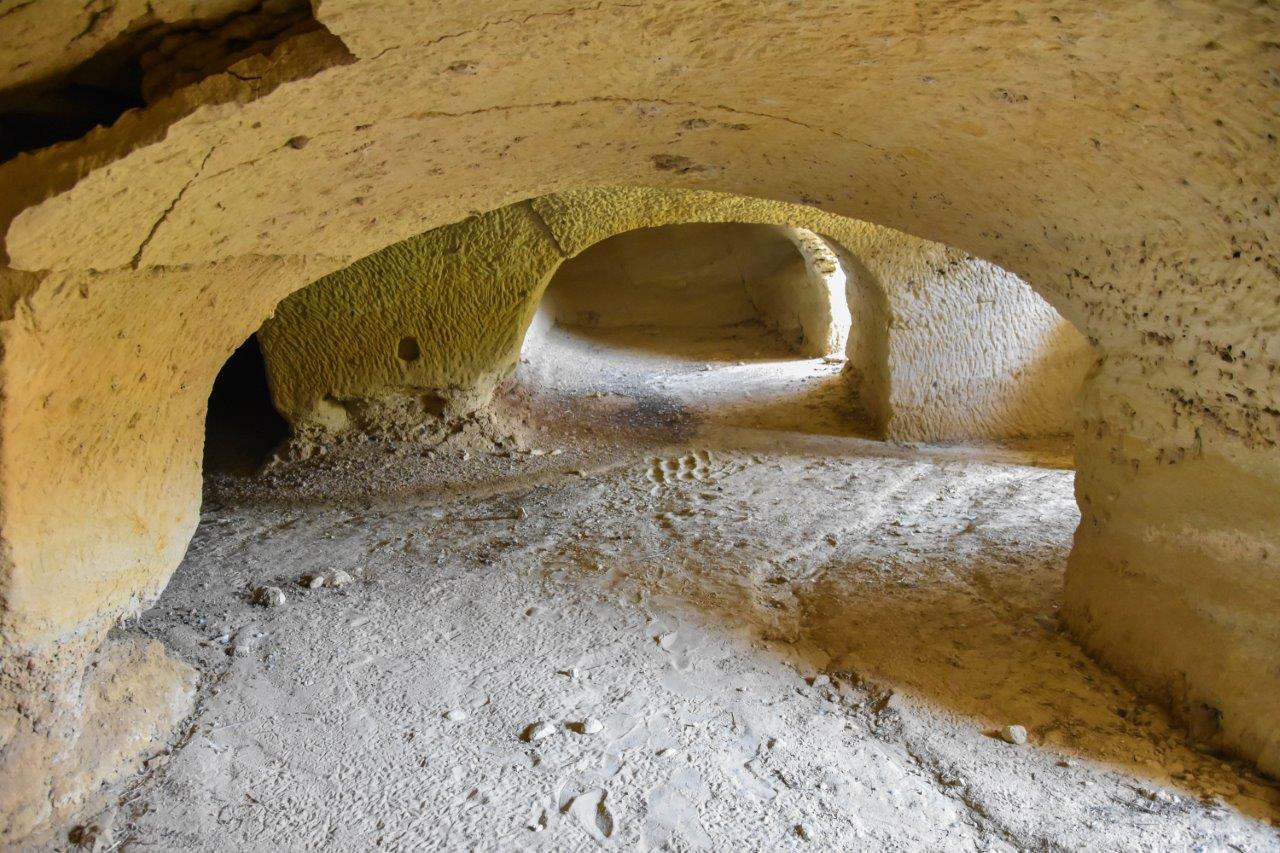
Halfway along, a corridor extended 21 metres into the hill, with three 7-metre tomb chambers on either side. Apparently this cave tomb was built in the 5th-6th century B.C.E. It was magnificent. Even Matt was impressed – despite being officially Tomb-Weary.
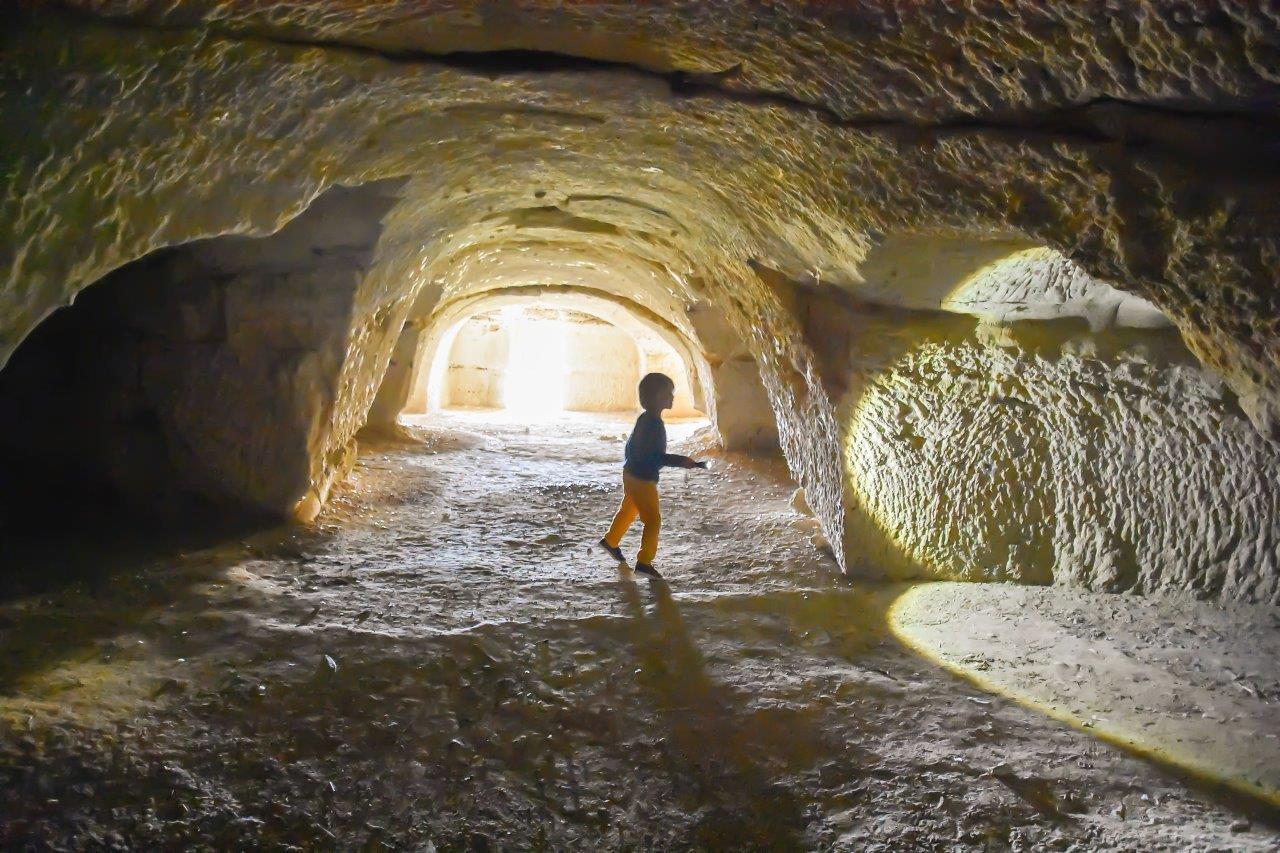
At the end of some of the chambers were loads of scratches on the walls. Clearly made when the people were building them, but I freaked myself out with the thought that they were made by someone who was entombed alive trying to get out.
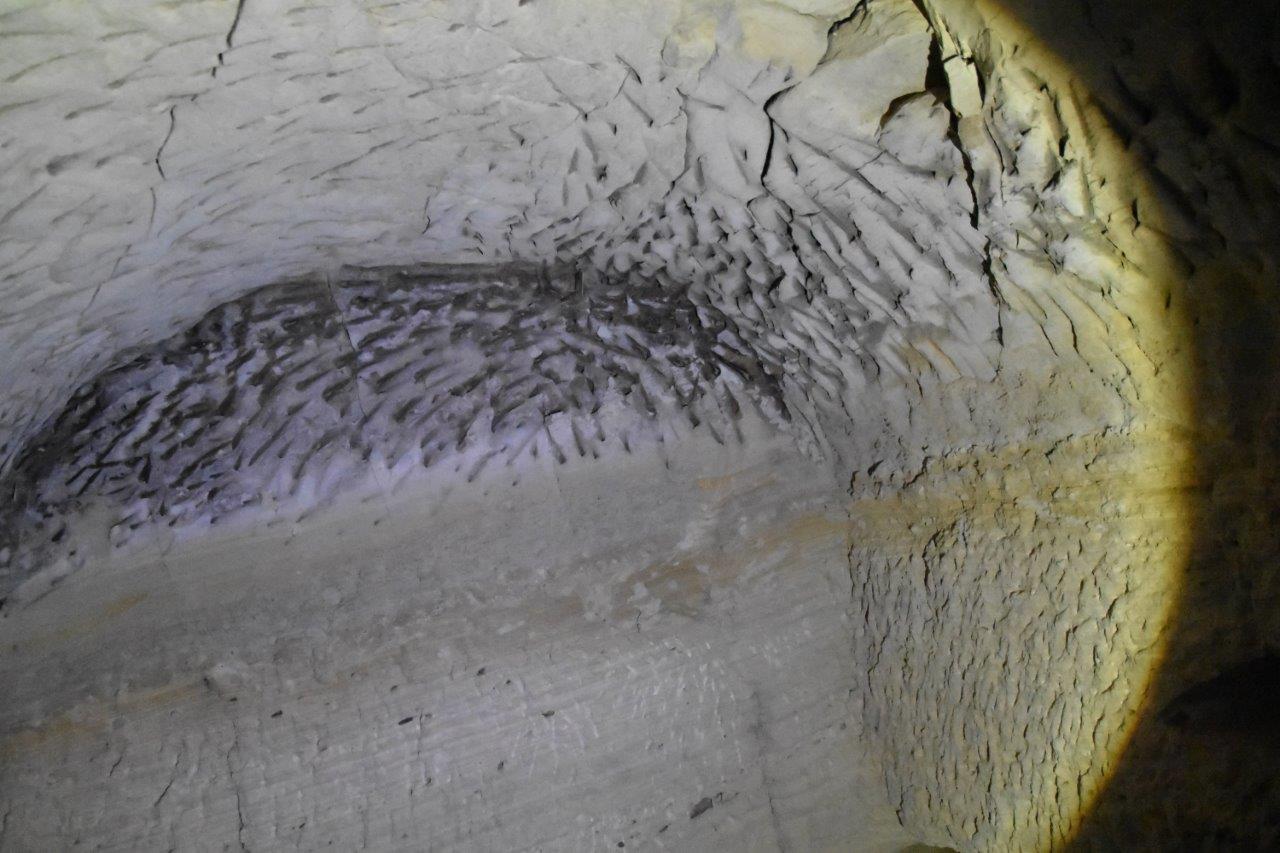
The photo below also freaked me out. I thought I’d captured a ghostly figure – until I realised it was my own shadow. Duh!
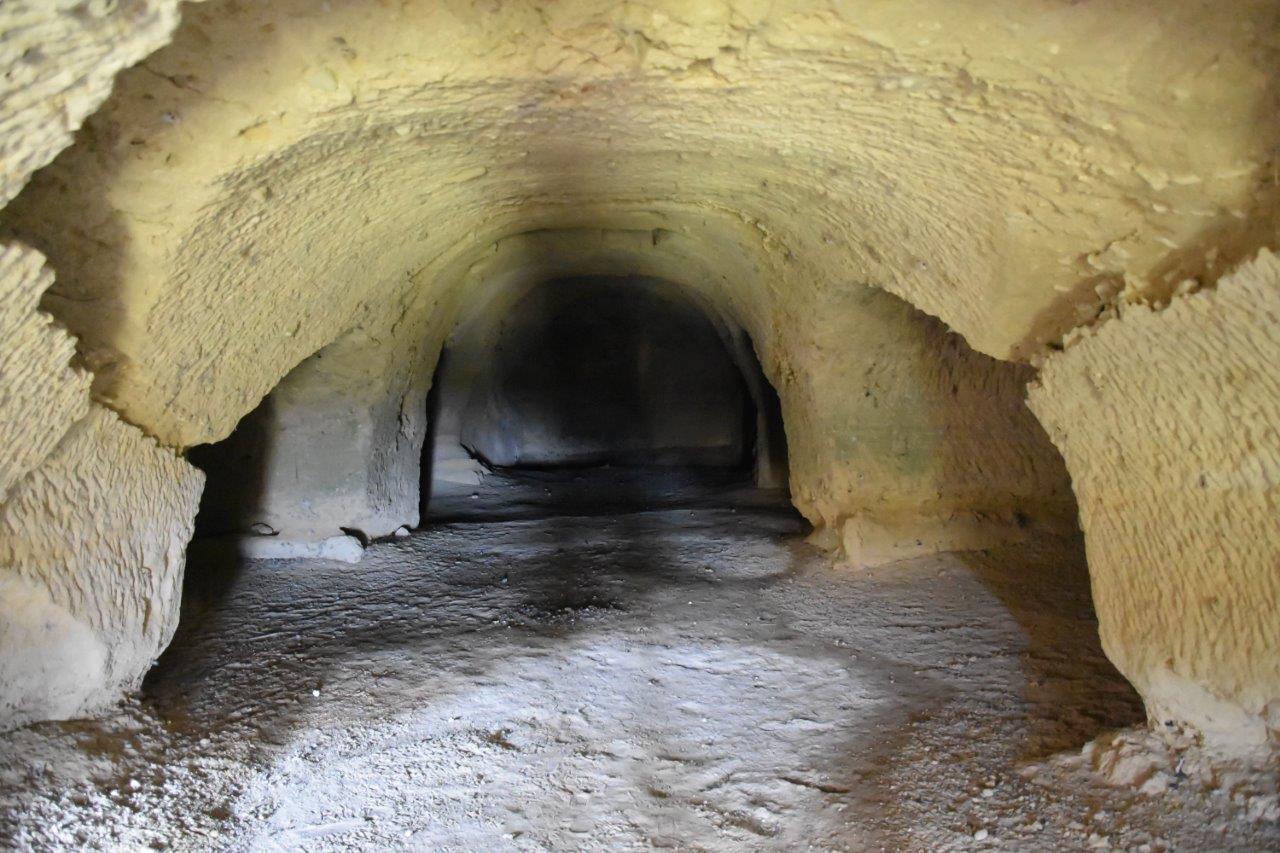
There are many stories surrounding this tomb, but the one I like the most is that the King of Kastros lived in the cave when King’s Hill opposite fell into the hands of his enemies. Apparently he buried all his treasure on King’s Hill and would watch the hill from the doorway of the cave.
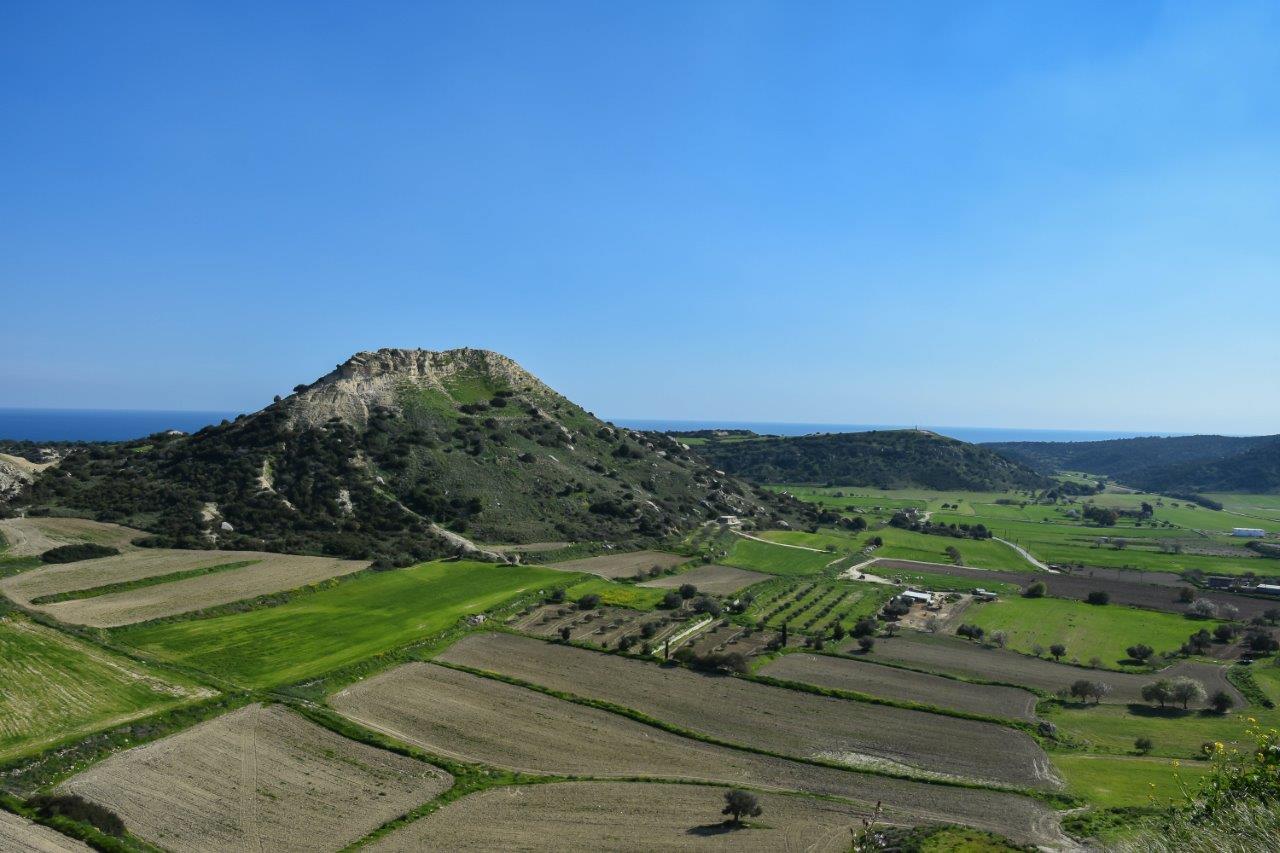
We weren’t quite finished exploring the area around Kaleburnu yet. I’d read about there being the ruins of a castle on the coast nearby and managed to persuade Goobie and Matt to go on a very quick detour on our way back to Dipkarpaz (though it was in the opposite direction).
Nitovikla Castle is thought to have been built in the 15th century B.C.E as protection against sea raids. The castle is marked on the tourist maps of the Karpaz Peninsula. Drive to the village of Kuruova, a few kilometres down the road from Kaleburnu. As you drive into the village, turn left and follow the road that leads to the coast – there are a few roads that lead in that direction but they all take you to that one track. A word of caution here: the track is extremely bumpy at first and I wouldn’t want to take a non-4×4 down it. The track was dry when we went, but if it had been raining, I think only tractors would be able to get down there.
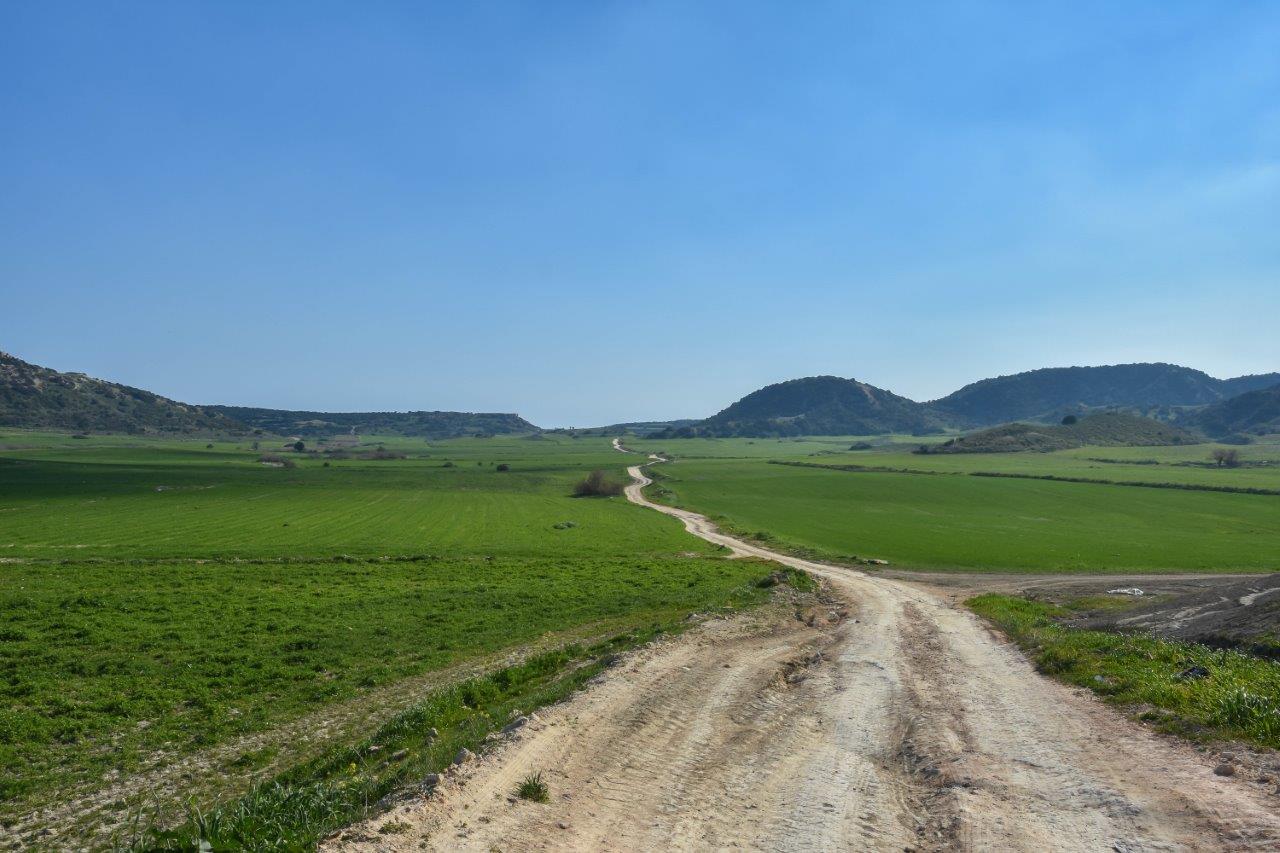
We drove all the way to the coast where, according to the maps and Google Earth, Nitovikla Castle was just on the left. But could we find it? No!! I wasn’t expecting to find anything huge, but since it was on the tourist maps, I did expect to at least be able to see something. Even a signpost. There was nothing obvious. We used some of our dwindling internet data and Googled photos of the castle so that we’d at least know what to look for. From what we found, we think Nitovikla Castle was on a little hill to the left of the track overlooking the sea. I thought I could make out a footpath leading to the top of the hill. We weren’t certain and it was getting late, so we didn’t explore any further. Perhaps when we return on our road trip later in the year.
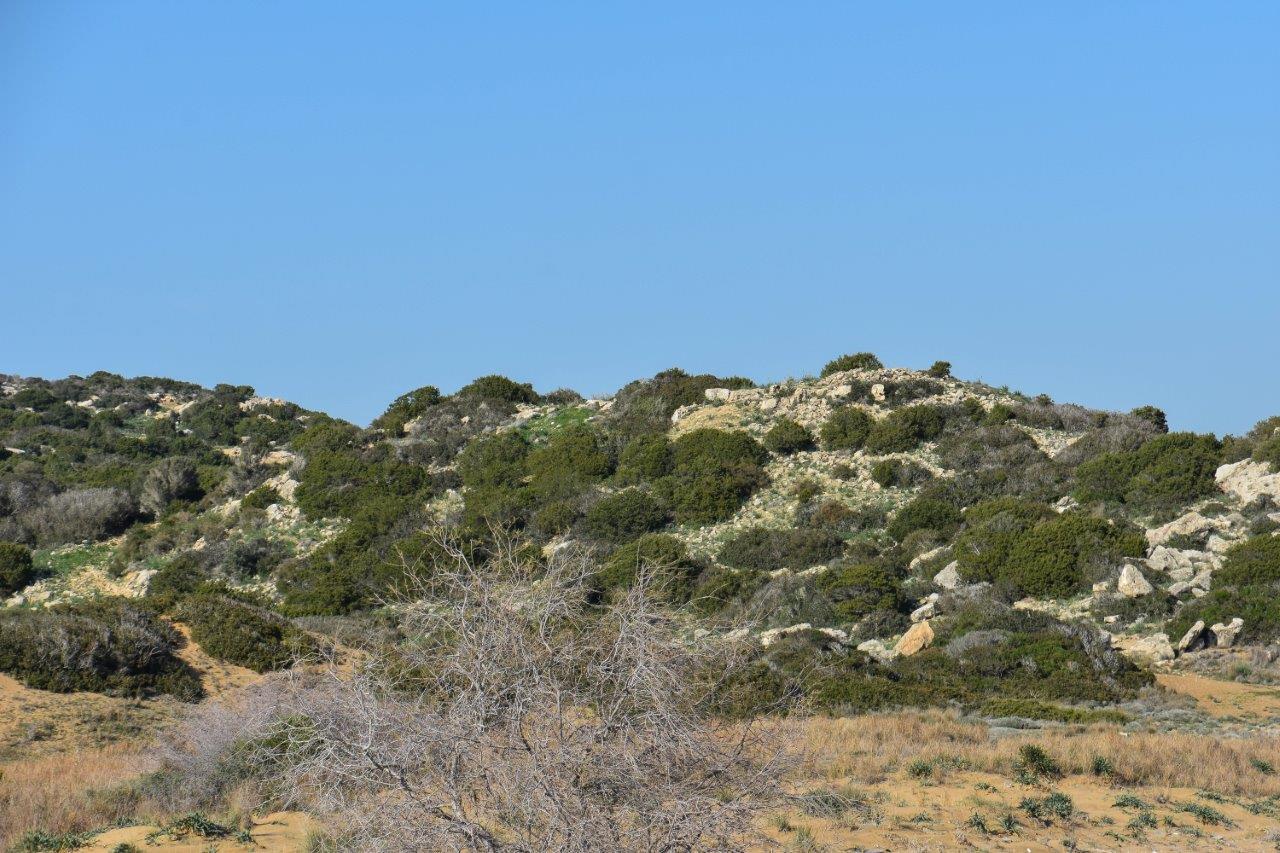
Despite not being certain that we’d found the castle, we did find a really nice, sandy beach at the end of the bumpy track. I’ll bet Golden Beach and other popular beaches on the peninsula get crowded in the summer. Since this one is harder to reach, I’d be surprised if it sees many tourists.
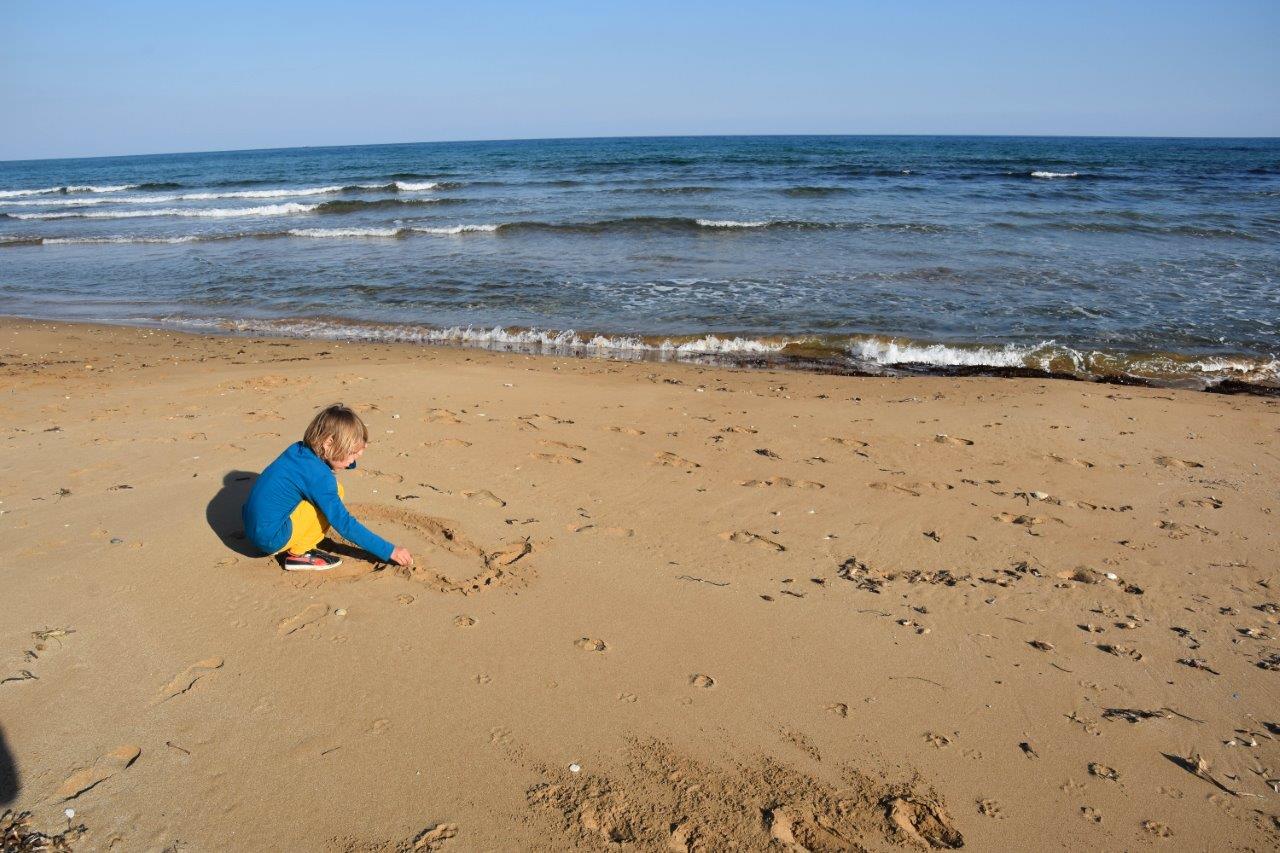
However, for Goobie, the most exciting discovery of the day was lying by a sand dune near the car. A sheep/goat skeleton. He was utterly mesmerised and spent ages studying it. The bits that still had fur and hooves attached were of particular fascination. We talked about which bits of the body the bones were from. And then it was time to go.
Except Goobie had no intention of being parted from the sheep skeleton.
‘Mummy, it’s interesting. Can we take it home?’
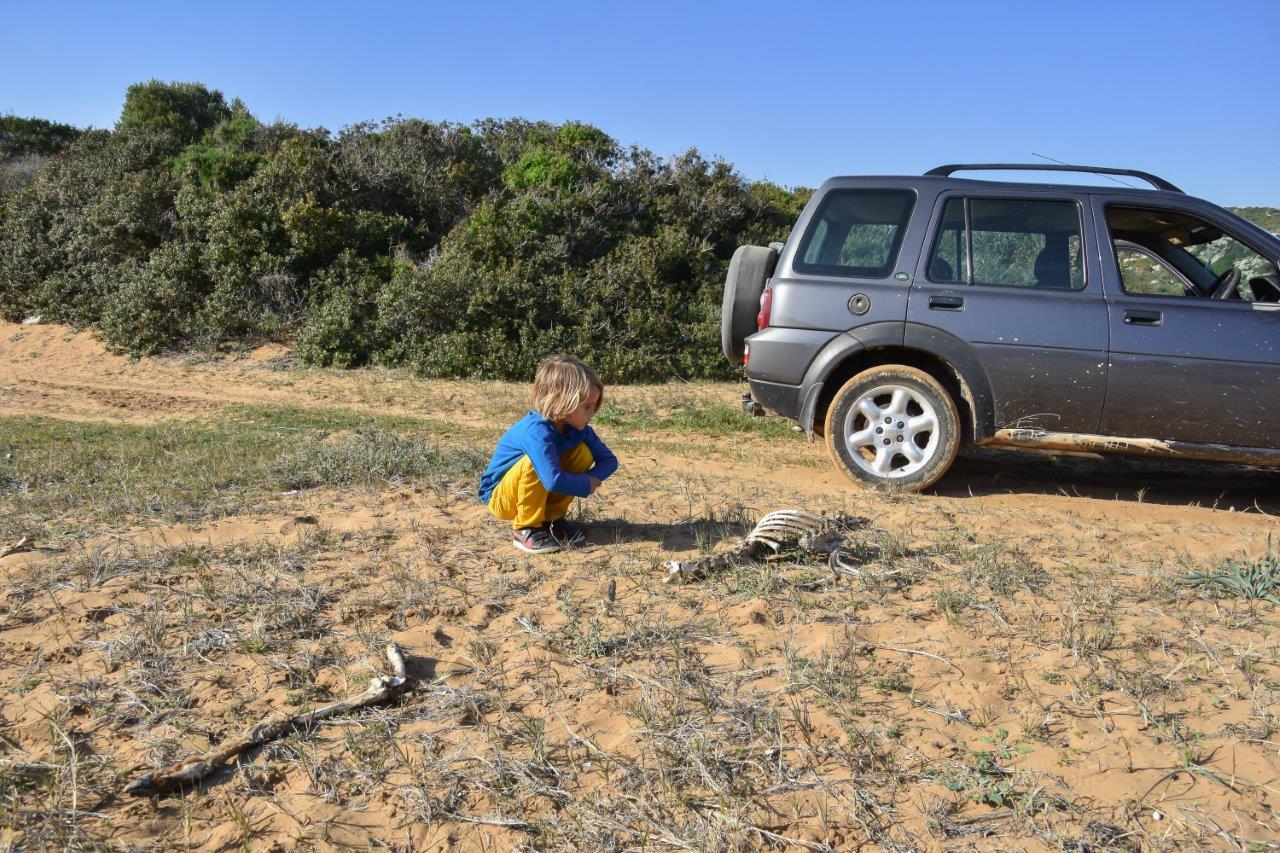
We had two options:
A: Discourage a burgeoning scientific mind by saying ‘NOOOO!!! We are two days from home and it will stink out the car.’
B: Say ‘Of course, darling, there’s some space in the car for it between the chocolate muffins and the bag of coats.’
He drove a hard bargain but we compromised on the skull, a bit of spinal column, the pelvis and half a leg with hoof. But NO skin and fur!
Matt skilfully managed to put the bones in a bag without touching them, which gave us a good laugh to watch. The bag was then put in the car boot next to a skull found the previous day and some dead flowers Goobie picked for me the previous week.
Delightful.
Leave a Reply